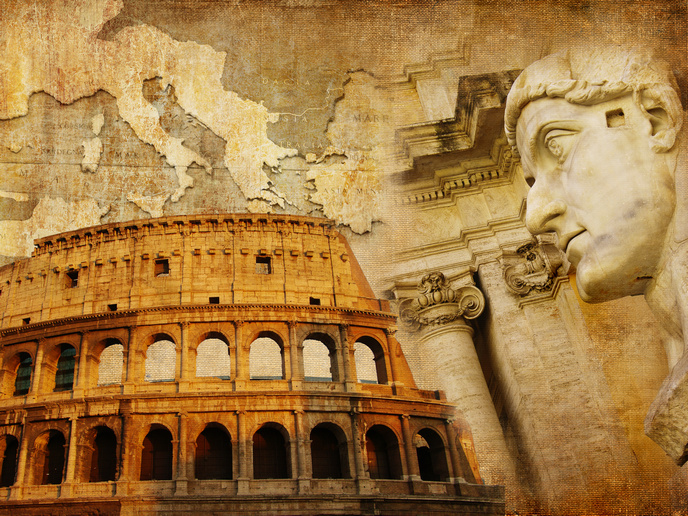What were ancient Rome and Greece like?
Imagine a day filled with music, poetry, drink, and philosophical and political debate. Depending on social class, status and gender, that was the typical life of a citizen about 2 000 years ago in Rome and Athens. Ever wondered about those ‘good old days’? More and more, AI is transforming historical sights and sounds into interactive experiences. Thanks to a new interactive AI platform(opens in new window) recently developed by the University of Zurich (UZH), the past can now be experienced in a completely different way. Called Re-Experiencing History, it generates true-to-real-life images from antiquity using scholarly sources. Users can visually design historically accurate scenes from ancient Rome and Greece based on their own ideas.
Opening a window to the past
What started out as a 12-month project(opens in new window) at UZH for Felix Maier, professor of ancient history, and computational linguist Phillip Ströbel has led to an innovative tool that takes us back in time with AI and specially trained models. Just about any situation from ancient times, such as marching legions and a victorious general on his chariot, can be modelled and re-experienced from different perspectives. “We cannot bring back a Roman triumph or a Greek festival, but by modeling them visually we provoke a dialogue between evidence and imagination,” Maier and Ströbel told ‘Forbes’(opens in new window). “The process makes us aware of gaps, uncertainties and biases, and that awareness itself is a form of knowledge.” The platform is mainly aimed for use by researchers, educators and museum staff. “It enables historians to develop new perspectives,” commented Maier in a UZH news item(opens in new window). “If we want to create an image of a Roman triumph, we now have to ask ourselves concrete questions. How clearly can the triumphator [general] be seen among the jubilant crowd? How was victory staged in an effective way? And which route did the procession follow?” The researchers developed the tool by combining AI models that were trained on academic literature and ancient sources. Specifically, they fed the AI image generators a meticulously curated set of nearly 300 images and captions, including illustrations from scholarly books on Roman clothing, weapons and architecture. The research team then got the system to enhance each prompt by finding historically precise information from a selected database comprised of about 70 research articles and books on Roman culture. This helped to produce much more authentic and accurate images based on scientific evidence. In contrast, most typical AI image generators use newer references and sleek visuals that can result in ridiculous outcomes. Can you picture Roman spectators holding smartphones at a victory parade, or a statesman addressing the Senate with a microphone?
Threat to human creativity
Maier stressed that Re-Experiencing History wasn’t created to replace imagination. “The more deeply we engage with AI-generated imagery, the more our historical imagination is stimulated. Dealing with AI challenges us to continuously assess the plausibility of its output. AI provides us with visual hypotheses, which we then need to ponder.” Re-Experiencing History is currently only available to UZH employees and students. There are plans to make it accessible to the public.



